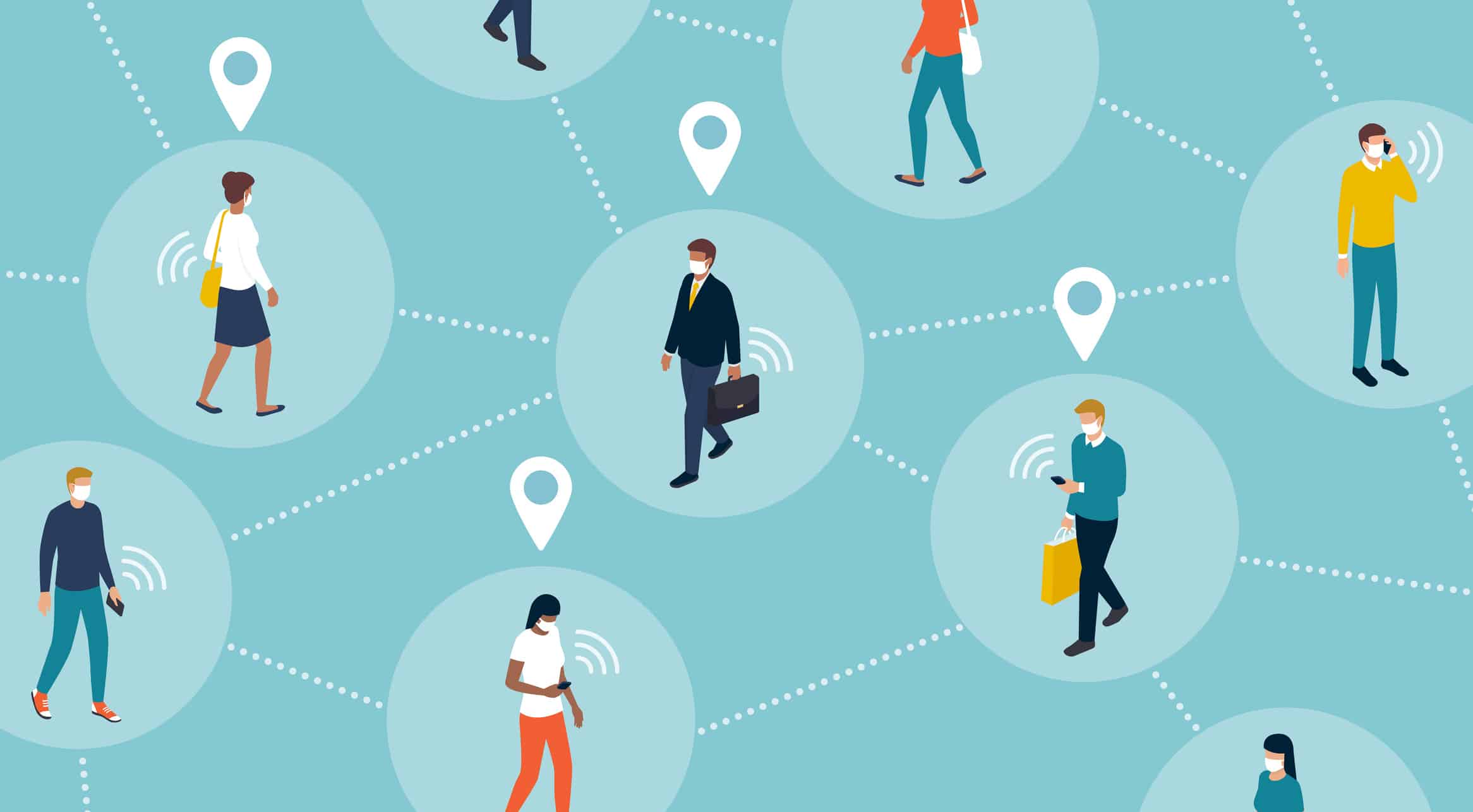In the COVID-19 world, there is a lot of misinformation and confusion about how to safely reopen organizations, campuses, and schools. The reality is there is no magic bullet for contact tracing programs. Contact tracing requires self reporting and HIPAA compliance for data privacy. For those reasons, our focus remains on providing safety officers, campus police, and school administrators with comprehensive, credible resources and suggestions for best practices to help inform decision-making in preventing the spread of infectious diseases, saving lives, and protecting people.
First and foremost, it is most important to listen to the recommendations put forth by the Centers for Disease Control and Prevention (CDC), as well as state and local health departments, in order to determine the best course of action. We compiled the following list of resources for you to share with people with COVID-19 cases, those who developed symptoms of COVID-19, close contacts, and those potentially exposed:
- CDC Resources for COVID-19
- CDC What to Do If You Are Sick
- CDC Resources for Contact Tracing
- World Health Organization Risk Communication Resources for Employers
- CDC Coronavirus FAQs
These types of links can easily be added to the “Resources” section of your emergency notification mobile app. The video below demonstrates how administrative changes are immediately reflected in the Omnilert app.
The CDC recently stated, “Identifying contacts and ensuring they do not interact with others is critical to protect communities from further spread. If communities are unable to effectively isolate patients and ensure contacts can separate themselves from others, rapid community spread of COVID-19 is likely to increase to the point that strict mitigation strategies will again be needed to contain the virus… Technology partners are key in the modification of existing systems and the development of new user-friendly data interfaces to manage multiple data streams with seamless interoperability.”
Software-based automation, such as that provided by emergency notification and management systems, can supplement manual contact tracing efforts to improve accuracy, speed, and cost. Contact tracing surveys can be sent out using any of the tools listed below.
- Sending a Survey From the Microsoft Environment
- Sending a Survey From the Google Environment
- Omnilert Mobile App Polling
The following video demonstrates how you can poll people by sending a question with several response options through the Omnilert app and view the responses in aggregate for targeted follow up.
Additionally, you may ask your stakeholders to perform their own self-assessment. Once again, this can be added to the “Resources” section of your emergency notification mobile app. Here is a link to an example poll, as well as a sample message and self-assessment survey sent out by a local public school system:
Public School System Message and Survey
If you don’t feel well, stay home, and seek medical attention. Do not come to the facility. Symptoms to watch for include coughing, sneezing, fever, chills, muscle aches, shortness of breath or difficulty breathing, sore throat, or new loss of smell. If you have any of these symptoms please stay home and seek medical advice from your healthcare provider.
To be sure it is safe for you to visit the facility, you must be able to answer “no” to each of the following questions:
Answer “YES” or “NO”; in the last 48 hours have you had any of the following:
A new fever (100.0°F or higher) or a sense of having a fever?
A new cough that you cannot attribute to another health condition?
New shortness of breath that you cannot attribute to another health condition?
A new sore throat that you cannot attribute to another health condition?
New muscle aches (myalgia) that you cannot attribute to another health condition, or that may have been caused by a specific activity (such as physical exercise)?
Have you been around someone who has symptoms of illness or someone who has tested positive for COVID-19?
If you answered “yes” to any of these questions, please seek medical attention and postpone any visits to our facilities until you are well.
Visitors to our facilities should practice physical social distancing whenever possible, maintaining six feet or more of separation from others.
Visitors 10 years of age and older, as developmentally appropriate, are requested to wear face coverings when entering, exiting, traveling through, or spending time inside any facility. Visitors are encouraged to follow other recommended mitigation efforts, including frequent hand washing and covering of coughs and sneezes.



